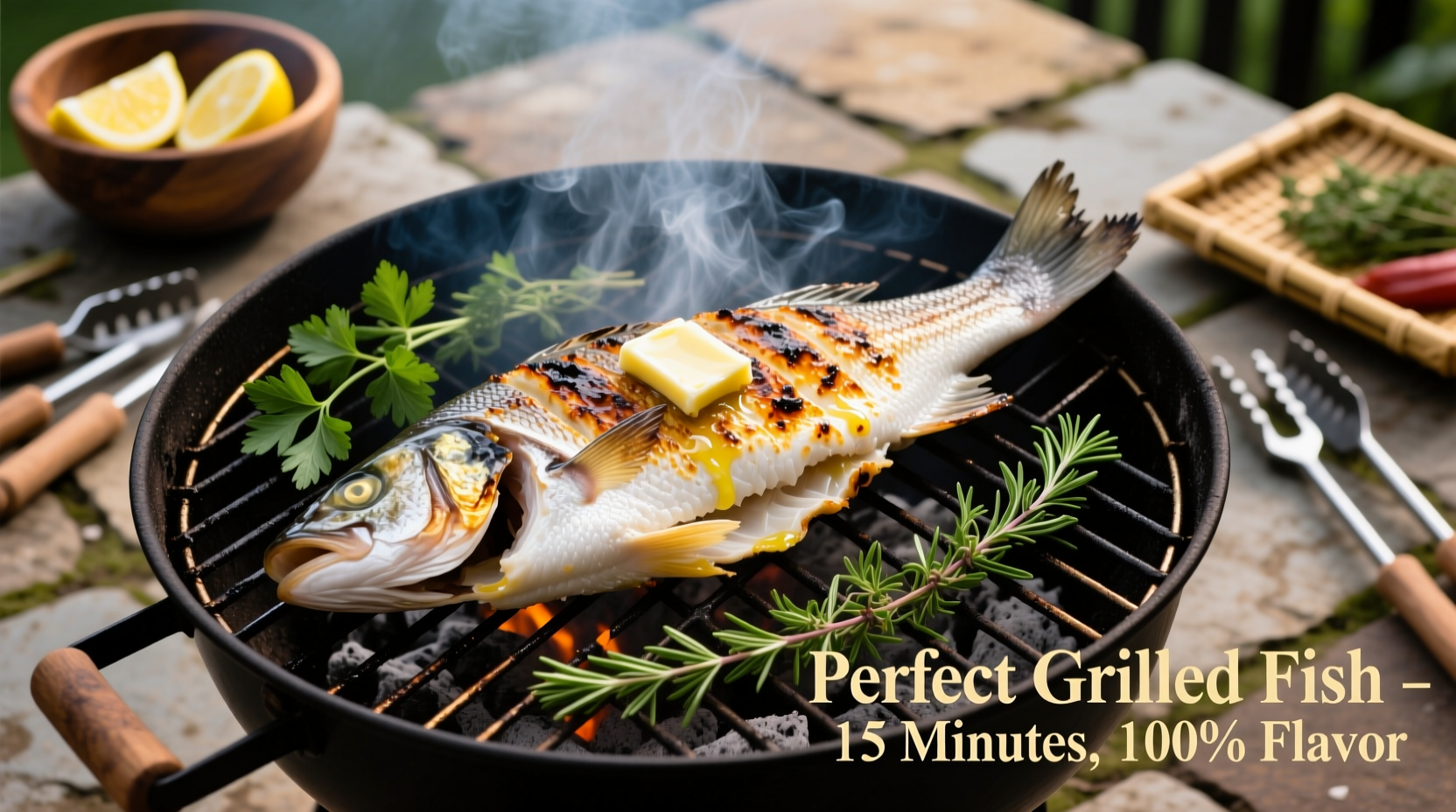Grilling fish perfectly requires medium-high heat (375-400°F), proper oiling of both fish and grill grates, and cooking for 8-10 minutes total (4-5 minutes per side for 1-inch thick fillets). The fish is done when it flakes easily with a fork and reaches 145°F internal temperature.
There's nothing quite like the smoky aroma of perfectly grilled fish—crisp skin, tender flesh, and that unmistakable char that elevates simple seafood to restaurant quality. Whether you're hosting a summer barbecue or seeking a healthy weeknight dinner, mastering fish on the grill transforms ordinary meals into extraordinary experiences. In this guide, you'll discover professional techniques that prevent sticking, ensure even cooking, and deliver restaurant-quality results every time—no special equipment required.
Selecting and Preparing Your Fish
Not all fish behave the same on the grill. Understanding which varieties work best prevents frustration and wasted ingredients. Firm-fleshed fish like salmon, swordfish, and halibut hold together beautifully, while delicate options like tilapia or sole benefit from additional preparation techniques.
| Fish Type | Grilling Suitability | Recommended Thickness | Special Considerations |
|---|---|---|---|
| Salmon | Excellent | 1-1.5 inches | Skin-on prevents sticking; cook skin-side down first |
| Swordfish | Excellent | 1-1.5 inches | Naturally firm; minimal prep needed |
| Halibut | Very Good | 1 inch | Brush with oil to prevent drying |
| Tilapia | Fair (with prep) | 0.5 inches | Requires cedar plank or foil to prevent falling apart |
Professional chefs universally recommend bringing fish to room temperature for 20-30 minutes before grilling. This critical step ensures even cooking throughout—cold fish from the refrigerator cooks unevenly, resulting in overcooked edges and raw centers. While your fish warms, pat it thoroughly dry with paper towels; moisture is the enemy of perfect searing.

Grill Setup: Temperature and Configuration
Proper grill temperature separates successful grilled fish from disastrous attempts. Research from the USDA Food Safety and Inspection Service confirms that fish cooked at medium-high heat (375-400°F) develops optimal texture and flavor while reaching safe internal temperatures efficiently.
For charcoal grills, arrange coals for two-zone cooking—pile coals on one side for direct heat, leaving the other side empty for indirect cooking. Gas grill users should preheat with all burners on high, then reduce to medium after 10-15 minutes. Always clean grates thoroughly with a brass brush, then oil them using tongs and a folded paper towel dipped in high-smoke-point oil like canola or avocado.
The Cooking Process: Timing and Technique
Season fish simply with salt and pepper 15 minutes before grilling—this allows flavors to penetrate without drawing out moisture. For additional flavor, create a compound butter with lemon zest and herbs, or use a light marinade (no more than 30 minutes for delicate fish).
Place fish at a 45-degree angle to the grates for attractive sear marks, then resist moving it for the first 3-4 minutes. This initial sear creates a natural non-stick barrier. When properly seared, fish will release easily from the grates—forcing a flip too early causes tearing.
Cooking time depends on thickness, not type. Follow the 10-minute rule: cook for 5 minutes per inch of thickness. A 1-inch thick fillet needs approximately 5 minutes per side. The fish is done when it flakes easily with a fork and reaches 145°F internally. Overcooking is the most common mistake—fish continues cooking after removal from heat.
Troubleshooting Common Grilling Problems
Fish sticks to the grill: This usually indicates insufficient heat or inadequate oiling. Ensure grates are properly preheated and oiled. If fish sticks during flipping, let it cook 1-2 minutes longer—the sear needs more time to develop.
Fish falls apart: Delicate fish requires extra preparation. Try one of these professional solutions:
- Use a cedar plank (soaked for 1 hour first)
- Grill on a double layer of heavy-duty foil with holes poked for smoke infusion
- Apply a light coating of beaten egg white before seasoning
Burning before cooking through: Create a buffer zone by moving fish to indirect heat after initial searing. For thicker cuts, finish cooking with the lid closed to create an oven-like environment.
Serving Your Perfectly Grilled Fish
Rest fish for 3-5 minutes before serving to allow juices to redistribute. Pair with bright, acidic elements that cut through richness—lemon wedges, chimichurri, or a simple salsa verde. For complete meal planning, serve with grilled vegetables and a light grain salad.
Mastering grilled fish opens endless culinary possibilities. From simple weeknight dinners to impressive entertaining, these techniques transform basic ingredients into memorable meals. Remember that practice builds confidence—your third grilled fish will be better than your first. With these professional methods in your repertoire, you'll consistently achieve that perfect balance of smoky char and tender, flaky flesh that makes grilled fish a perennial favorite.











 浙公网安备
33010002000092号
浙公网安备
33010002000092号 浙B2-20120091-4
浙B2-20120091-4